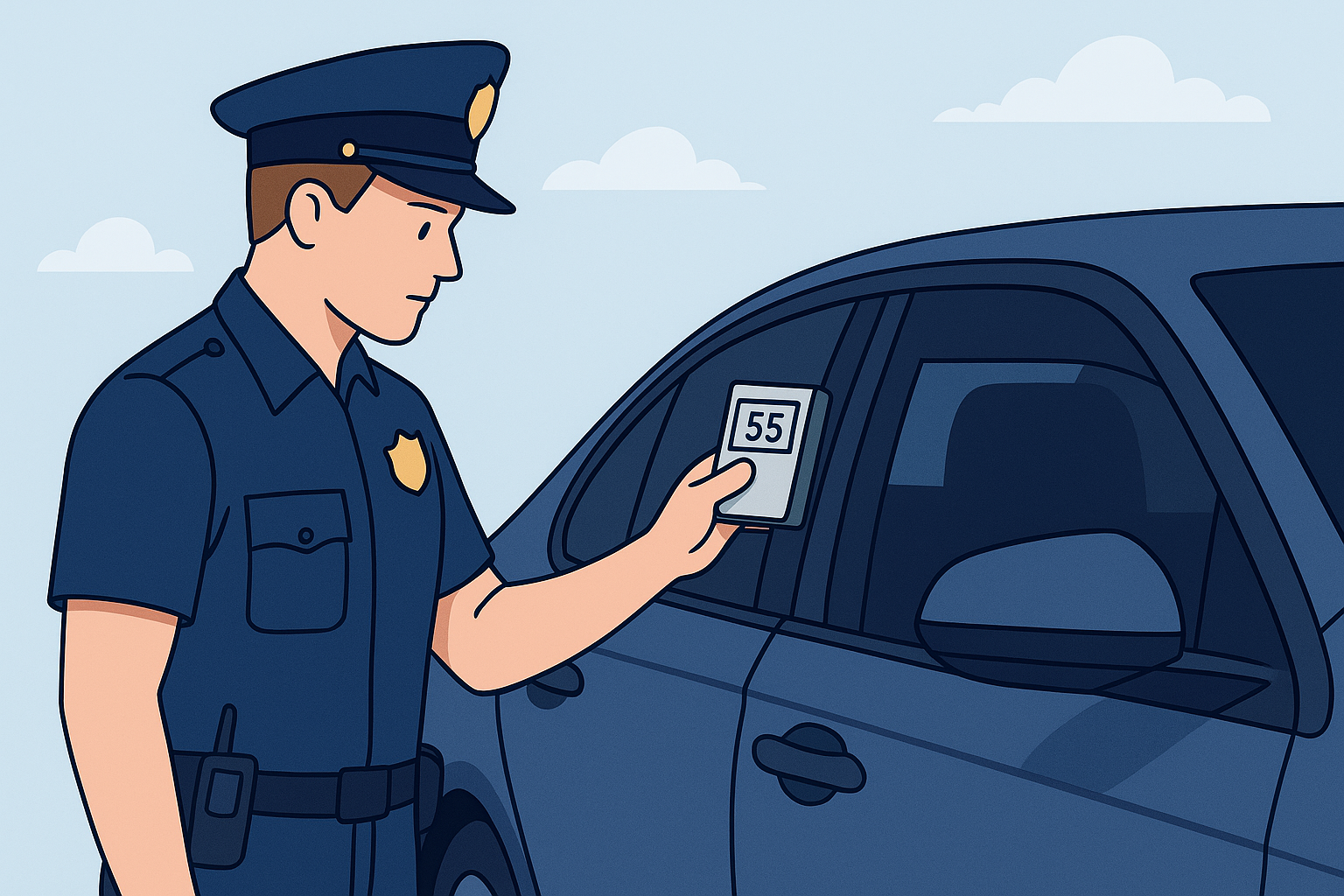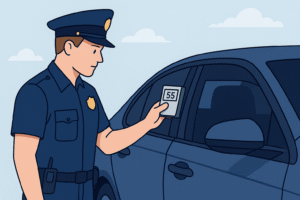The high level of sunshine in Florida has made window tinting common among the citizens who wish to ensure their cars are cool and minimize glares. There are, however, rigid restrictions on the darkness/reflectiveness of your tint in Florida window tinting law, and these restrictions vary based on the vehicle (sedan, SUV, van). Breaking such rules constitutes a non criminal violation of the traffic law yet there are fines and a court appearance. This guide explains Florida window tint laws as they will be in 2025, describes the development of the law, and points out the major court cases that demonstrate how the rules are applied by police officers and courts.
Why Florida Controls Window Tinting
Tinting windows have a number of benefits and they include; minimizing heat, preventing unwanted UV rays and interior of the car is not destroyed by the sun. Tint can be used in a place such as Florida where the summer temperatures can be very hot, hence making drivers comfortable. Even darker movies may have a similar effect by limiting the visibility of the driver and making it difficult to be detected by the law enforcement inside the vehicle. The laws on window tints in Florida are trying to strike a balance between these issues. The law firm of Browning states that the state controls tint mostly by Visible Light Transmission (VLT) percentage which is used to determine the amount of natural light that can go through the window and the film. The smaller the VLT the darker.
Florida Tint Laws 2025: Vehicle Type Limits by the Law
Sedans and Coupes
The Florida tint laws in Florida establish certain VLT requirements of cars, sedans and coupes. The tint should be permitting at least 28 percent of light on the front side of the windows and rear side windows and rear windshield should be allowing at least 15 percent VLT. The windshield must not have non-reflective any part below the manufacturer AS-1 line, around five inches at the top of the windshield.
SUVs, Vans and Trucks
Multi-purpose vehicles such as SUVs, vans and trucks can be given darker shade on the back. The front side windows must be at least 28% VLT but the rear side windows and rear window may be as opaque as 6% VLT. The same case is with the sedans, non-reflective tint is only legal above the AS-1 line on the windshield.
The 2025 amendment to Florida tint legislation did not alter the VLT limit, but rather it elaborated the distinction between sedans and SUVs and it further stated that the AS-1 line criterion is applicable to all occupancy cars. The update was also a reminder to installers and drivers, that the use of double-layered films is illegal in case the combined tint is less than the legal VLT limits.
Tint Reflection of Windows and Color Restrictions
The tint films are either reflective or non-reflective. Dark color should be used to reflect light out of the car to reject heat and glare. The law of Florida permits a bit of reflection, but only to a certain extent:
-
Color restrictions Florida does not permit tints of color, like red or blue; any film has to be neutral black/gray.
-
Side mirrors: cars with dark windows on the rear should have double side mirrors to counteract the low rear visibility.
-
Stickers: the legislation mandates the presence of a tint compliance sticker on the door jamb on the driver section to specify the film manufacturer.
Special Exemptions: Medical and Vehicle-Based
Florida permits darker tint among individuals with some medical problems and some vehicle groups. NuVision Auto Glass 2025 guide reveals that drivers who have such conditions as lupus, albinism, photosensitivity or vitiligo can receive a certificate of a medical exemption. The certificate should be issued by the department of highway safety and motor vehicles and stored in the vehicle at all times. With an exemption, however, the front windshield is not allowed to be tinted below the AS-1 line.
Vehicles with Automatic Tint Exemptions
-
Vehicles used in law-enforcement and emergency
-
Limousines
-
Public transit buses
-
SUVs, federal-compliant vans and trucks that have been tinted in factories
These vehicles can have darker films due to privacy or safety concerns however, they must meet federal standards of reflectivity and color.
Penalties and Enforcement
Breaking the law of window tint in Florida is a non-crime traffic violation. The fines that will be charged to first-time offenders will be between 100 and 150 dollars though the fines may rise with repeat offenses. The police can stop a traffic based on a suspected tint violation only, drivers can be stopped even when they are following all the other legislation.
The guide provided by NuVision states that the illegal tint could lead to a fix-it ticket and the driver would need to take off the tint and produce evidence of the fact. Illegally filmed vehicles can also be checked in during renewal of registration. In order not to be penalized, one should hire certified installers and ensure the film complies with state requirements.
Criminal Cases: The Interpretation of Tint Violation by Courts
Tint Window as Likely Reasonableness
A number of court cases define the interpretation of tint laws by Florida judges. State v. Florida Fourth District Court of Appeals. As Sarria (2012) stated, the officer who had stopped a vehicle to pay attention to the fact that it tinted the rear-window had probable cause to do so. In Vaughn v. The First District Court of Appeals ruled in favor of a traffic stop in which the window tint of the car seemed to be too black (State, 2015). In 2024, the court in a case reported in the newsletter Legal Eagle, made it clear that the apparent tint violation is sufficient to stop the person, no matter what subjective motives that the officer had. According to the newsletter, it is a non-criminal traffic offense that is characterized as excessive tinting of the windows and the breach of the law of traffic is probable cause to stop.
State v. Hall (2024)
The 2024 case State v. Hall engaged an officer who noticed a car of dark color and thought there was a drug deal. The trial court firstly quashed evidence on the basis of the alleged ulterior motive by the officer. The court reversed on appeal saying that subjective intent on the part of the officer was not material in cases where there was probable cause. According to the Legal Eagle, only the apparent violation of the tint of the window was enough to create probable cause in order to stop. The decision strengthened the fact that the Florida courts apply the objective test: the presence of any violation of the traffic rules makes the stop valid even in spite of the intention of the officer.
The Impact These Cases Have on Drivers
These precedents imply that the drivers whose tints are in illegal colors may be stopped and searched even in case the police suspect them of some other offences. Combined with penalties, it allows emphasizing the significance of adhering to the Florida law on window tint. In case your tint is too dark, the officers can check VLT with a meter and issue a ticket or demand to take it off. The stop will most likely be upheld by the courts provided that there is an objective violation of the traffic law.
Real-Life Advice on Being Compliant
-
Measure Your Tint – Measure the VLT of your windows by a certified tint shop. Both the film and the glass are influencing VLT and as the aftermarket kits do not necessarily compare to the limits in Florida.
-
Install tinting the Windshield – Tinting the windshield should begin above the AS-1 line and not below.
-
Check Reflectivity – Have your tint not more than 25% reflection on front windows and 35% on rear in windows.
-
Keep Documentation – In case of having a medical exemption, keep the certificate in your car. In the case of exemption on vehicles, make sure your vehicle is up to standard.
-
Keep Side mirrors and stickers – Have two sided mirrors in case your back windows are dark, and have compliance sticker on the driver door jamb.
Why People Tint Their Windows in Florida
Despite the restriction of the law on the tint darkness, a considerable number of drivers prefer legal tint due to the climate in Florida. The heat and the bright sunlight imply that a parked car can be hotter (45 degF warmer) than the surrounding air. Quality prevents the entry of solar energy, glare as well as shields passengers against dangerous ultraviolet UV rays. Tint also maintains upholstery and electronics as it does not fade over time and enhances the privacy of occupants.
Comfort and Energy Efficiency
Tinting of windows assists your air conditioner to work less by minimizing the amount of heat in the vehicle. This enhances fuel efficiency and lessens battery discharge on hybrid and electric cars. The dark tint of the rear of the SUVs is mostly preferred by parents to make sure their children stay cool to avoid sunburn.
Safety Benefits
Driving can also be safer with the use of high-quality tint. It minimizes glare making sure that the drivers are able to see in broad daylight. Non reflective tint decreases glare of headlights in the night by enhancing reaction time. These advantages are effective only in case the tint is in accordance with tint laws in Florida 2025 so that no visual impairment occurs.
Florida Tint Laws vs. Other States
Florida is rated as being moderately permissive in comparison with such states as New York where side windows should allow at least 70 percent of light to pass through them. Certain states have higher VLT and some have similar or darker tints on the rear such as Mississippi and Georgia. Out-of-state, other jurisdictions have varying regulations and other states ticket out-of-state drivers whose tint is not within their own law.
FAQs (Frequently Asked Questions)
What is the darkest legal tint where I live, Florida?
In the case of sedan and coupe, 15% VLT is the darkest rear side and rear windshield legal tint. In the case of SUVs, vans and trucks the rear side windows and the back glass can be darker than 6% VLT. Windows on the front sides should have at least 28 percent of light penetration.
Is 20% tint legal in Florida?
No. The tint of 20 per cent blocks 80 per cent of light, which happens to be below the legal amount of light required to be blocked in front windows, thus illegal on the front side windows of any vehicle. The rear side windows and rear windshield of sedans are permitted to have a 20 per cent tint due to the legality of 15 per cent or higher, but not on the front ones.
Will you pull me because of a tinted window?
Yes. The Florida law enforcers are authorized to make a traffic stop just because they suspect a tint violation. A non-moving violation (window tint ticket) does not require the officer to move the vehicle, although he or she can issue a citation and search the vehicle when there is probable cause.
Are there medical exemptions to tint on the windshield?
No. Darker tint on side and rear windows are permitted under medical exemptions, but not tint below the AS-1 line on the windshield. Even with exemption, drivers are still obliged to abide by the windshield rule.
What are punishment provisions of illegal tint in Florida?
The fines are usually between 100 and 150 as a first time offense but according to NuVision Auto Glass, the fines as a result of illegal tints can go to 116 as well as up when it comes to repeat offenders. The drivers can be issued with a fix-it ticket where they are expected to strip the tint and present evidence of the same.
Should I have a certification sticker?
Yes. The Florida legislation mandates that there be a compliance sticker on the door jam on the driver side. This sticker ascertains that the tint has been legally made and installed by a qualified manufacturer or installer.
What are the Florida tint laws when compared to Florida neighbors?
Georgia and Mississippi have minimum front and rear side window VLT of 32 and 28 percent, respectively. The Florida state limits (28 percent front, 15 or 6 percent rear) are more permissive than in many states, but less so than some of the southern neighbors. Look at the tint laws of the state you are going to.
Conclusion
The Florida window tint laws create a balance between privacy, comfort and safety. The 2025 update has not altered the rules much other than making them clear and enforced by the decisions in the court. The tint of cars used by drivers should not exceed state regulations – 28% VLT on front windows, 15 or 6 percent the rear windows depending on the kind of car, and reflection should not be above 25 or 35 percent. Failure to do so may result in fines, a court date and even probable cause to a traffic stop. These laws will help you to reap the benefits of window tint without the legal hassles.
Front side windows: can not reflect light greater than 25 per cent.
Rear side windows: may not be reflected more than 35%.
If you want to know more about Legal Tint in California click here.





